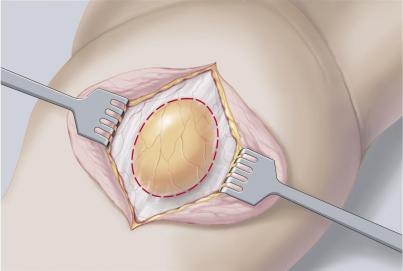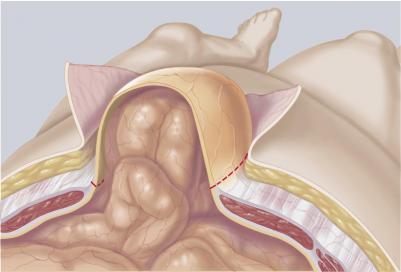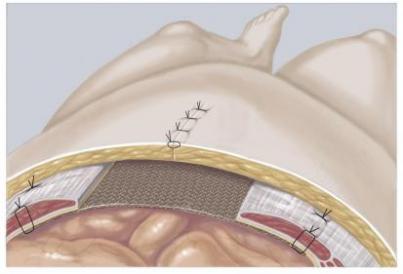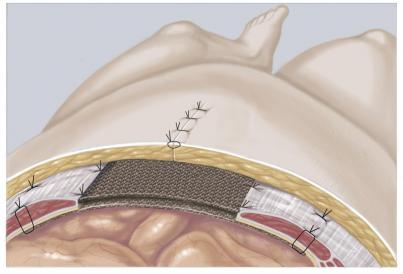3.2.4 IPOM (open)
If there is an extremely large incisional hernia with complete lateral displacement of the rectus abdominis muscles, using an open technique a large mesh can be sutured from the inside to the abdominal wall (IPOM = Intraperitoneal Onlay Mesh technique). To that effect, the entire hernial sac is exposed [Fig. 36], and the intestinal loops detached from the abdominal wall, to which they had become affixed due to adhesions strands from a previous operation. Then the hernial sac is removed completely as far as the margin of the connective tissue sheath of the rectus abdominis muscles [Fig. 37]. After that, the synthetic mesh is placed from the inside, with overlapping, over the defect. The synthetic mesh is fixed using U-sutures applied through the supporting layers of the abdominal wall [Fig. 38]. The defect remaining between the two rectus abdominis muscles can, if necessary, be further secured by means of a second synthetic mesh that is sutured to the fascia margin or the fascia [Fig. 39]. This will depend on the condition of the individual patient.
This procedure can, of course, only be carried out under general anaesthesia.

Fig. 36: Exposure and opening of hernial sac (open IPOM)

Fig. 37: Removal of hernial sac (open IPOM)

Fig. 38: Fixation of synthetic mesh (open IPOM)

Fig. 39: Additional fixation with second synthetic mesh (open IPOM)
